|
|
|
Sort Order |
|
|
|
Items / Page
|
|
|
|
|
|
|
| Srl | Item |
| 1 |
ID:
101518
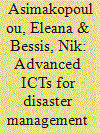

|
|
|
|
|
| Publication |
Hershey, Information Science Reference, 2010.
|
| Description |
xxiv, 344p.
|
| Standard Number |
9781615209873, hbk
|
|
|
|
|
|
|
|
|
|
|
|
Copies: C:1/I:0,R:0,Q:0
Circulation
| Accession# | Call# | Current Location | Status | Policy | Location |
| 055585 | 384.5/ASI 055585 | Main | On Shelf | General | |
|
|
|
|
| 2 |
ID:
083491


|
|
|
|
|
| Publication |
London, CRC Press, 2008.
|
| Description |
xvii, 280p.
|
| Standard Number |
9781420076547
|
|
|
|
|
|
|
|
|
|
|
|
Copies: C:1/I:0,R:0,Q:0
Circulation
| Accession# | Call# | Current Location | Status | Policy | Location |
| 053906 | 363.32537/KEN 053906 | Main | On Shelf | General | |
|
|
|
|
| 3 |
ID:
054156


|
|
|
|
|
| Publication |
Cambridge, Cambridge University Press, 2004.
|
| Description |
xii, 363p.
|
| Standard Number |
0521814723
|
|
|
|
|
|
|
|
|
|
|
|
Copies: C:1/I:0,R:0,Q:0
Circulation
| Accession# | Call# | Current Location | Status | Policy | Location |
| 048717 | 363.3497/URS 048717 | Main | On Shelf | General | |
|
|
|
|
| 4 |
ID:
156756
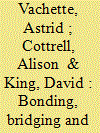

|
|
|
|
|
| Summary/Abstract |
Cyclone Pam (March 2015) was an unprecedented event in Vanuatu forcing the simultaneous involvement of national and long-term international actors, well integrated into the national disaster governance system, as well as numerous short-term international actors, unfamiliar with the geopolitical and cultural disaster context of the country. Cooperation between these three groups of actors evolved through the three scales of bonding, bridging and linking social networking. This paper questions the different drivers and challenges within and across these scales of social networks affecting cooperation among the three different groups of actors during an emergency. Using a mixed methodology based on social network analysis, this paper utilises the case study of Cyclone Pam in Vanuatu to study the strengths and weaknesses of the disaster governance system in place based on bonding and bridging social capital to conduct disaster risk management and to prepare the integration of linking social capital when external support is needed. This paper contributes to the identification of key considerations in the development of resilience-building strategies: the interactions of diverse actors to address disaster management needs and the reciprocal impacts of these interactions within and across the three different scales of social networks.
|
|
|
|
|
|
|
|
|
|
|
|
|
|
|
|
| 5 |
ID:
099417


|
|
|
|
|
| Publication |
Washington, DC, World Bank, 2009.
|
| Description |
xxiii, 157p.
|
| Standard Number |
9780821377666
|
|
|
|
|
|
|
|
|
|
|
|
Copies: C:1/I:0,R:0,Q:0
Circulation
| Accession# | Call# | Current Location | Status | Policy | Location |
| 055321 | 363.349216091732/PRA 055321 | Main | On Shelf | General | |
|
|
|
|
| 6 |
ID:
118518
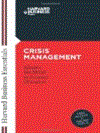

|
|
|
|
|
| Publication |
Boston, Harvard Business School Press, 2004.
|
| Description |
ix,138p.pbk
|
| Series |
Harvard Business Essentials Series
|
| Standard Number |
9781591394372
|
|
|
|
|
|
|
|
|
|
|
|
Copies: C:1/I:0,R:0,Q:0
Circulation
| Accession# | Call# | Current Location | Status | Policy | Location |
| 057109 | 658.4056/HAR 057109 | Main | On Shelf | General | |
|
|
|
|
| 7 |
ID:
082728
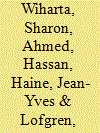

|
|
|
|
|
| Publication |
Solna, SIPRI, 2008.
|
| Description |
xvii, 139p.
|
| Standard Number |
9789185114573
|
|
|
|
|
|
|
|
|
|
|
|
Copies: C:1/I:0,R:0,Q:0
Circulation
| Accession# | Call# | Current Location | Status | Policy | Location |
| 053317 | 363.3480684/WIH 053317 | Main | On Shelf | General | |
|
|
|
|
| 8 |
ID:
186835


|
|
|
|
|
| Summary/Abstract |
To combat the coronavirus epidemic, the city at the epicentre, Wuhan, China, was placed under strict lockdown in 2020 for 76 days. Unlike past emergency response situations in China, government-organised Residents’ Committees (RC), property management companies, and other community institutions played an unusually prominent role in enforcing the lockdown, providing essential services, and maintaining public order. This article explains the role of community institutions in emergency management in China through case studies of the 2008 earthquake in Chengdu, the 2016 flood in Wuhan, and later, the 2020 coronavirus outbreak. Drawing on databases of media reports and individual accounts, I argue that the administrative and coercive power of community institutions stems from their spatiality—from being embedded in gated residential communities, maintaining contact and familiarity with residents, and having control over physical structures. During earthquakes and floods, when the physical space that give community institutions power is changed and destroyed, the role of these organisations in emergency response diminishes. However, when facing an epidemic, in which structured physical space is not only unchanged but also reinforced, community institutions take the lead.
|
|
|
|
|
|
|
|
|
|
|
|
|
|
|
|
| 9 |
ID:
045999
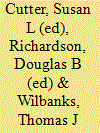

|
|
|
|
|
| Publication |
New York, Routledge, 2003.
|
| Description |
xxi, 274p.
|
| Standard Number |
0415946425
|
|
|
|
|
|
|
|
|
|
|
|
Copies: C:1/I:0,R:0,Q:0
Circulation
| Accession# | Call# | Current Location | Status | Policy | Location |
| 047008 | 363.32/GEO 047008 | Main | On Shelf | General | |
|
|
|
|
| 10 |
ID:
069366
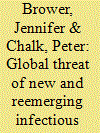

|
|
|
|
|
| Publication |
Santa Monica, Rand Corporation, 2003.
|
| Description |
xxvii, 146p.
|
| Standard Number |
0833032933
|
|
|
|
|
|
|
|
|
|
|
|
Copies: C:1/I:0,R:0,Q:0
Circulation
| Accession# | Call# | Current Location | Status | Policy | Location |
| 046543 | 363.32/BRO 046543 | Main | On Shelf | General | |
|
|
|
|
| 11 |
ID:
092064
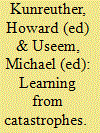

|
|
|
|
|
| Publication |
New Jersey, Wharton School Publishing, 2010.
|
| Description |
xvii, 332p.
|
| Standard Number |
9780137044856
|
|
|
|
|
|
|
|
|
|
|
|
Copies: C:1/I:0,R:0,Q:0
Circulation
| Accession# | Call# | Current Location | Status | Policy | Location |
| 054549 | 363.34/KUN 054549 | Main | On Shelf | General | |
|
|
|
|
| 12 |
ID:
141310
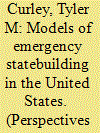

|
|
|
|
|
| Summary/Abstract |
Over the last decade, the impact of emergencies on the American state has become the subject of renewed interest. While early literature in the post-9/11 era often overlooked the historical development of crisis governance in the United States, many scholars have begun to uncover the precedents that continue to shape modern emergency management. In an effort to clarify the main analytical assumptions of the existing scholarship, I construct three models of emergency statebuilding: permanent emergency state, national security state, and contract state. The models each share an underlying framework of historical institutionalism, which defines the state as a stabilized material institutional structure that is disrupted by emergency conditions—exogenous shocks that cannot be incorporated into the normal statebuilding processes or legal order. Yet this perspective is ill-equipped to explain institutional change. I propose discursive institutionalism as an approach that emphasizes how discourse and ideas construct emergencies as objects of government management—in different ways, at different times. I then illustrate the utility of this perspective by demonstrating the influence of national planning ideas on efforts to prepare the state for emergencies before they occur.
|
|
|
|
|
|
|
|
|
|
|
|
|
|
|
|
|
|
|
|
|